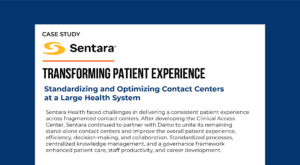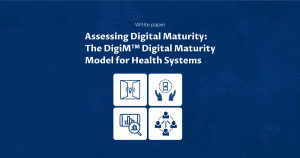Why interoperability is cool (again)
The ability to gain access to the data through reusable APIs significantly improves developer productivity, enabling CIOs to achieve more with the same resources.

Healthcare data integration was in the news recently with the Office of the National Coordinator highlighting API-led connectivity across Health IT applications as part of its proposed five-year Federal Health IT Strategic Plan.
ONC has been waging a battle with the healthcare and technology sectors to open up data access to patients. While emphasizing greater accessibility of data to patients, ONC chief Don Rucker also noted that the healthcare system’s transformation is “hindered by entrenched interests looking to prohibit access to that information.”
Aside from concerns around data blocking and data access for patients, the ONC’s endorsement of API-led integrations is significant. APIs are the connective tissue that can actually unlock the data and enable access to patients, researchers, and others looking to create engaging digital health experiences.
APIs are pieces of code that expose data from underlying information systems in industry-standard formats (such as FHIR, along with the widely adopted HL7 v2). APIs enable uniform, scalable, and repeatable integrations that accelerate development cycles through standardization and reuse.
With the rise of API-led connectivity as an important enabler for digital transformation, Interoperability is cool again. For the past few years, data interoperability has been the poster child for lack of progress in digital health innovation.
The fact is that most healthcare IT systems enable access to the underlying data through a set of APIs, and the emergence of the API-led app economy is a fundamental driver for technology-led innovation in healthcare.
In the face of competitive pressures, healthcare enterprises are increasingly concerned about speed and agility in creating digital experiences for patients and caregivers.
The ability to gain access to the data through reusable APIs significantly improves developer productivity, enabling CIOs to achieve more with the same resources. Developers need no longer worry about changes in the underlying data structures. They can rely instead on APIs to do the job for them and focus more on orchestrating the data to compose new applications rapidly.
Digital transformation initiatives are commonly associated with new and digitally-enabled patient experiences. Most users of digital front door applications don’t really know (or care) how the data behind the scenes is aggregated and orchestrated to deliver the experiences.
Aside from intuitive user experience and interface design, the real key to delivering on the promise of the experience is presenting the data in real-time at the experience layer. Consider this: For a patient trying to get a physician appointment through a patient app, the app has to be able to connect in the back end with a provider directory, use an AI algorithm to identify the right match, access a calendar for available spots, and link it to the nearest physical location for the patient.
APIs that access data from multiple back end systems enable the experience just described. What’s more, a digitally enabled scheduling function eliminates much of the manual effort, wait times, and frustration for patients that is the current state at most hospitals and health systems. APIs are at the heart of enabling such experiences.
Healthcare IT environments operate with hundreds of connectors, developed on multiple data exchange standards, performing the integration function. With the increasing pace of innovation, IT functions are being required to democratize the access to data and standardize the means of access so that a broad range of developers, within and outside the organization, can quickly and easily compose applications with minimal effort on back end integrations.
The emergence of API management platforms (distinct from integration gateways) that control, provision, and monitor access to the library of APIs across the enterprise, has advanced API-led development. With new data sources emerging every day, including non-healthcare data such as social determinants, and unstructured data, such as images, having an API-led integration strategy and an effective way to manage the APIs has become a priority for healthcare technology leaders.
Well, that’s the concept anyway.
Sharing of patient data is a sensitive issue fraught with politics today. In addition to the ONC acting on behalf of patients, big tech firms, digital health startups, and EHR vendors are in a constant standoff about access to the data. Some see themselves as stewards of the patient data that they help their clients manage.
However, that’s not the same as providing unfettered access to the data, and an intense lobbying effort is underway by EHR firms to create guardrails to protect patients from misuse of the data by naked commercial interests.
This doesn’t impair bona fide actors from gaining access to the data, as long as they go through the elaborate vetting and compliance process to access EHR data through secure gateways to list on marketplaces and app stores.
A related concern is that of public trust, especially with regards to behemoth tech firms that have had to defend themselves in light of wide-ranging data sharing agreements, despite the evident benefits of insights that can emerge from applying advanced analytics tools on the underlying data.
Setting aside the politics, CIOs and digital health innovators need to consider a robust API-led interoperability strategy supported by working relationships between EHR firms and other market players to be critical success factors for accelerating digital transformation.














